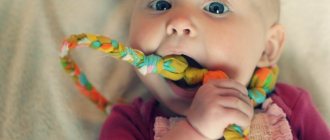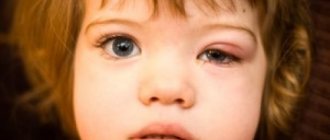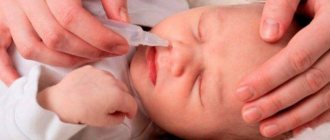Constant disputes about the hardening of children, common sense in treatment, clothing and other everyday life of modern parents are a common occurrence in the “mother-child” forum. It’s good that people argue, listen to other people’s opinions and draw conclusions - or don’t, confirming their own opinions. Life is in full swing and becoming more and more interesting, thanks to new facts, scientific discoveries, and the emergence of new “gurus” in medicine. Development, progress - only for the good.
There is no clear opinion about “right” or “wrong”. Everything can be rethought. The topic is vast and fascinating; one can write and think about it for years. This series of articles will be devoted to hardening as a way of life. Not systems, not instructions, but competent decisions, devoid of fanaticism in ordinary everyday child care. And he begins with a small note for mothers of “stroller” children on the topic of balcony walks.
Probably no other country in the world pays as much attention to stroller-aged children’s walks as we do. This is a trail from the Soviet past - a rare case, but a reasonable trail. Here it is: if a child sits at home for several days in freezing weather, the mother’s guilt complex grows: the child does not breathe fresh air. A foreign mother would look out the window and draw a conclusion. Ours is panicking. Is she really a bad mother, depriving her child of an important ritual? But sometimes you are too lazy to go out: tiredness, household chores... Shouldn’t you sit at home for weeks? What is the benefit of walking in cold winter - and is a balcony really dangerous?
Wind and frost for children's skin
The influence of frost and wind affects drying of the skin more than the sun's rays. In strong winds, water on the surface of the skin evaporates faster. The covers dry out, begin to peel off, and the process of microcracks may begin to appear. The skin begins to be exposed to ultraviolet radiation, chemical exposure, and the introduction of microorganisms and allergens. Low temperature in measured proportions is very useful. Cold hardens the body, stimulates its defenses, and improves vascular microcirculation. In the first ten minutes of walking, the blood vessels constrict, the body gives a command to retain heat. The skin then begins to receive warm, oxygenated blood. A healthy glow appears, the child feels great, having a pleasant time in the fresh air. With further prolonged cooling, blood supply decreases and immunity decreases, which can cause frostbite.
Since children's skin is not as rich in oil-producing sebaceous glands as adult skin, the need for the use of children's protective creams has been scientifically proven.
Basic rules when walking
To avoid problems during winter walks, you need to use special cosmetics and remember simple rules. About cosmetics a little later, but here are the rules that you need to follow:
- A winter walk is indicated for a baby when he reaches two months. The first exit should not exceed twenty minutes, subsequent ones can be longer - up to an hour and a half, provided that the temperature outside is no more than eight degrees below zero.
- If the baby's skin turns pale or blue, we bring the baby into the house and warm it up.
- When the frost is from twenty degrees, walks for children under three years of age are canceled; accordingly, children under five years old do not go outside if it is more than twenty-five degrees, and under nine years old - in thirty-degree frost.
- The child should be in constant motion (if possible).
- Rubbing snow on frozen cheeks and hands can cause damage to the epidermis.
No smartphone until 2 years old
Like many other experts, Komarovsky is categorically against children spending time with smartphones. According to the doctor, they interfere with the development of young children and can even be harmful to health. At an older age, it is important to ensure that the total screen time, including a smartphone, computer, TV, does not exceed 2 hours a day.
It is possible to replace a smartphone in a child’s hands with ordinary toys, of which there are now many. How to take it away from a baby who is used to eating exclusively with cartoons. According to the doctor, the only important thing in this matter is the desire of the mother and father to pay attention to the child.
Photo source: unsplash.com
— Today, mothers spend more time on Instagram than communicating with their children. And kids see Peppa Pig on tablets more often than their parents. Think about it. What your children need most is your time. And adults are always trying to pay off children - with smartphones, toys, books, cartoons.
How to dress a baby (video)
You need to think about options for choosing clothes for your baby in advance. The scarf should not serve as a mask for the child; the mouth and nose should be open. The amount of clothing a child wears should allow him to move more or less freely; do not turn him into a sedentary statue. A sweaty baby can catch a cold and get sick faster.
An approximate set of clothing should consist of:
- cotton underwear and pullover (long sleeves),
- wool sweater,
- windproof and waterproof overalls.
Watch a video on how to properly dress your baby for a winter walk:
Walking time by age
0 – 2 years
Very small, recently born babies can go for a walk for up to half an hour. Up to three months, the optimal walking temperature is considered to be 5 degrees. Three-four month olds are not afraid of ten-degree frost. In calm weather and the right clothes, you can safely walk for an hour. Pay attention to your baby’s behavior, he will tell you if he is dissatisfied with something.
24 years
Doctors recommend that two to four year old children walk in the fresh air every day for up to four hours. Even in fifteen-degree frost, fresh air is beneficial. If such a regime is unacceptable for you for some reason, the minimum duration of walks should be twice a day for half an hour. This will be enough to maintain the baby's immunity.
From 4 years
Older children may spend longer on the street. But if a child passively observes the world around him from a stroller or sled that you are moving, he will freeze faster than a moving, jumping, running tomboy. The kid will get more pleasure by sliding down the slide, let him ride a toy on a sled, and finally buy him skis.
Walking time by temperature (video)
If the temperature drops to minus fifteen with strong winds (more than seven meters per second), the walk must be shortened. It is not recommended to take children under four years old for a walk in the same frost and stronger wind.
From four and above (up to seven) - walks are canceled in case of twenty degrees frost and wind of more than fifteen meters.
It is necessary to take into account the strength of the wind and the percentage of humidity. If in your area there is fifteen degrees below zero in windless weather, go out with your child without hesitation; for those living in most Russian cities, windless days are a rarity; at the same temperature, a walk may already be cancelled.
If you have the Internet, look at weather websites; they often indicate the “feels” column, that is, how cold you will feel when leaving the room.
If a child has a runny nose, but the temperature is normal, there is no need to cancel the walk. Clean your nose before leaving home and go shopping at the nearest store. Upon entering the house, drink warm tea with your baby and engage him in calm games.
Why walking in winter is beneficial, why walking in the cold is harmful
When a person is taught from childhood to cold as a norm and not a danger, his body reacts harmoniously to low temperatures. When cooling, blood flows to the internal organs, carefully warming them up, and the protective forces are activated. On the street, the skin becomes cold - this is when the blood drains. At the same time, “unnecessary” places remain cool - for example, the face does not need to be warm, it is not warm. When overheated, the baby's body cools down by secreting sweat through the soles, palms and head, which is why they often seem damp and cool.
A walk in winter is an exercise for the mucous membranes and supports local immunity. Mucus is secreted (in the cold, noses are wet), sometimes the eyes water, all this is a normal reaction to the cold. The mucous membranes are actively working, the immune defense is activated, it does not “sleep”. This is very useful for supporting the body during viral epidemics, for future adaptation in kindergarten - and for other conditions when the immune system will have to fight foreign bacteria, remembering its previous training.
When walking in winter is harmful: when the air temperature is below -18-20°C, phagocytosis decreases, that is, the body's cells do not suppress various bacteria and viruses. But it all depends on the hardness of the body. If a child reacts normally to cold, even an hour-long walk at -20°C will not freeze him or make him sick. Moreover, there are windless weather when it is very nice outside.
But still, for the most part, these walks are not beneficial. Our delicate urban body, not accustomed to sports stress, when immunity training is carried out at an accelerated pace, reacts poorly to frost. If you don’t take your child outside at all at temperatures below -15-18°C, ventilate the apartment well, arrange “balcony” walks, but don’t have any complexes about staying at home. Immunity in the cold does not harden, but decreases: there is a reasonable limit to everything. Fanatical walks “for health” are inappropriate in this case.
“You need to walk at least 4-6 hours a day.” This truth, stated in medical textbooks, is repeated by many pediatricians. There is even a phrase “to walk all day long.” It is fair as a kind of ideal, but has little application to the modern winter. In those bright times when this testament was written, there were not yet a million cars everywhere that had nowhere to park and nowhere to drive; the snow was not completely covered with dogs that had nowhere to walk...
Times are changing, and now systematicity, and NOT duration, is important for walks. Walk for an hour, 1.5-2 hours - but every day. Just great. The main thing is every day. Or arrange “ventilation” with fresh air on the balcony. Give yourself a convenient time for walks so that they don’t stress you out. For example, many people find it more interesting to walk at dusk - time flies unnoticed, and the child gets some exercise before going to bed at night. Others find it more convenient to go out early in the morning.
How to tell if your baby is cold
Previously, parents touched the baby's nose. It was believed that if it was cold, the child was cold. Touch your nose - it’s also cold, but you’re not frozen, right?
Dress your baby in as many clothes as you plan to dress yourself. Then you will know exactly how he feels! If you start to freeze, it’s time for you to go home! True, if you have a very sedentary toddler, a warm envelope in the stroller is a must.
Signs of frostbite
Frostbitten skin has a pale bluish color. In a warm room, she weakly feels pain, touch, and warmth. When warming up, the pain returns and swelling appears. Severe frostbite can cause blistering. The body becomes lethargic, blood pressure and body temperature decrease.
Do not rub the frostbitten area with anything to avoid worsening the injury. The damaged skin is lubricated with Vaseline, and a clean, warm bandage is applied. Give the victim warm tea.
Getting your child ready for a winter walk
First, feed your baby before going outside. Food will give additional energy to the body. This will help maintain normal body temperature in low ambient temperatures. And, in addition, it is a good prevention of frostbite.
Secondly, the child should be dressed correctly. To do this, first count the number of layers of clothing you are wearing. And then, when dressing your baby, add another layer.
Use special children's cosmetics that will protect delicate skin from bad weather. You just need to apply it at least half an hour before leaving the house. Otherwise the result will be the opposite.
Particular attention should be paid to the choice of outerwear. Traditional padding overalls or down jackets look very bulky and often interfere with the child’s active movement and restrict movement. In the modern world, parents increasingly prefer thermal overalls. They cost an order of magnitude more, but in such a suit the baby will feel much more comfortable. These clothes not only help to warm the body, but also keep it warm.
However, in order to feel the effect, you need to choose the right clothes for the overalls. What does it mean? Manufacturers recommend wearing thermal underwear first. It is specially created to retain heat and, if necessary, remove moisture from the body. Next comes a layer of synthetic clothing, preferably fleece. The overalls themselves are put on top.
Read more in our article How to dress a child in winter?
Should I go for a walk if my child is sick?
The answer to this question is very individual. With a simple runny nose, frost not exceeding ten degrees, and no wind, a walk will have obvious benefits. It’s just better to limit yourself to passive riding on a sled or in a stroller. It’s better to avoid outdoor games for now. If your baby doesn’t want to go for a walk because he doesn’t feel well or the temperature outside is harsher, take a walk on the balcony to ventilate the rooms.
Winter walks are very popular with children. Sledding, skiing, skating, building snow forts, playing snowballs, aren’t these wonderful moments you remember from your childhood? Do not deprive your baby of joy, walk with him at any convenient moment!
- Author: Rina
Rate this article:
- 5
- 4
- 3
- 2
- 1
(1 vote, average: 4 out of 5)
Share with your friends!











